Currently Empty: €0.00
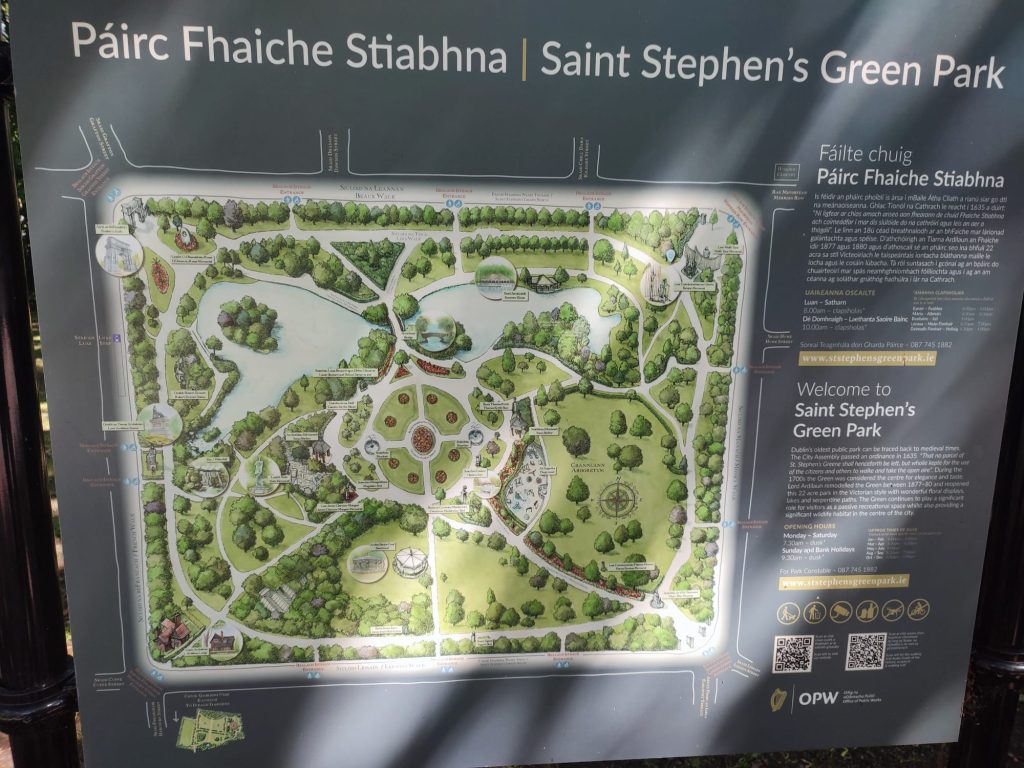
If you ever find yourself in Dublin and need a quiet escape from the stressful city life, we highly recommend spending some time in St. Stephen’s Green. Located right in the heart of the city, next to the lively and very busy Grafton Street, this park offers a surprising sense of peace and calm. we were genuinely amazed at how serene it felt the moment we stepped inside, especially considering how close it is to one of the city’s busiest shopping areas.
The park is very well maintained, with lots of green lawns, colorful flowerbeds, and plenty of shady trees. The day we visited the park was beautiful and the weather was perfect. By being a park in the open air it’s worthwile visiting it in days such as this, otherwise the experience could be less enjoyable.
St. Stephen’s Green has a long and fascinating history. The land was first enclosed in the 17th century and officially opened to the public as a Victorian park in 1880, thanks to Sir Arthur Guinness, a member of the famous brewing family. He paid for the redesign of the park and ensured it would remain a green space for everyone to enjoy.

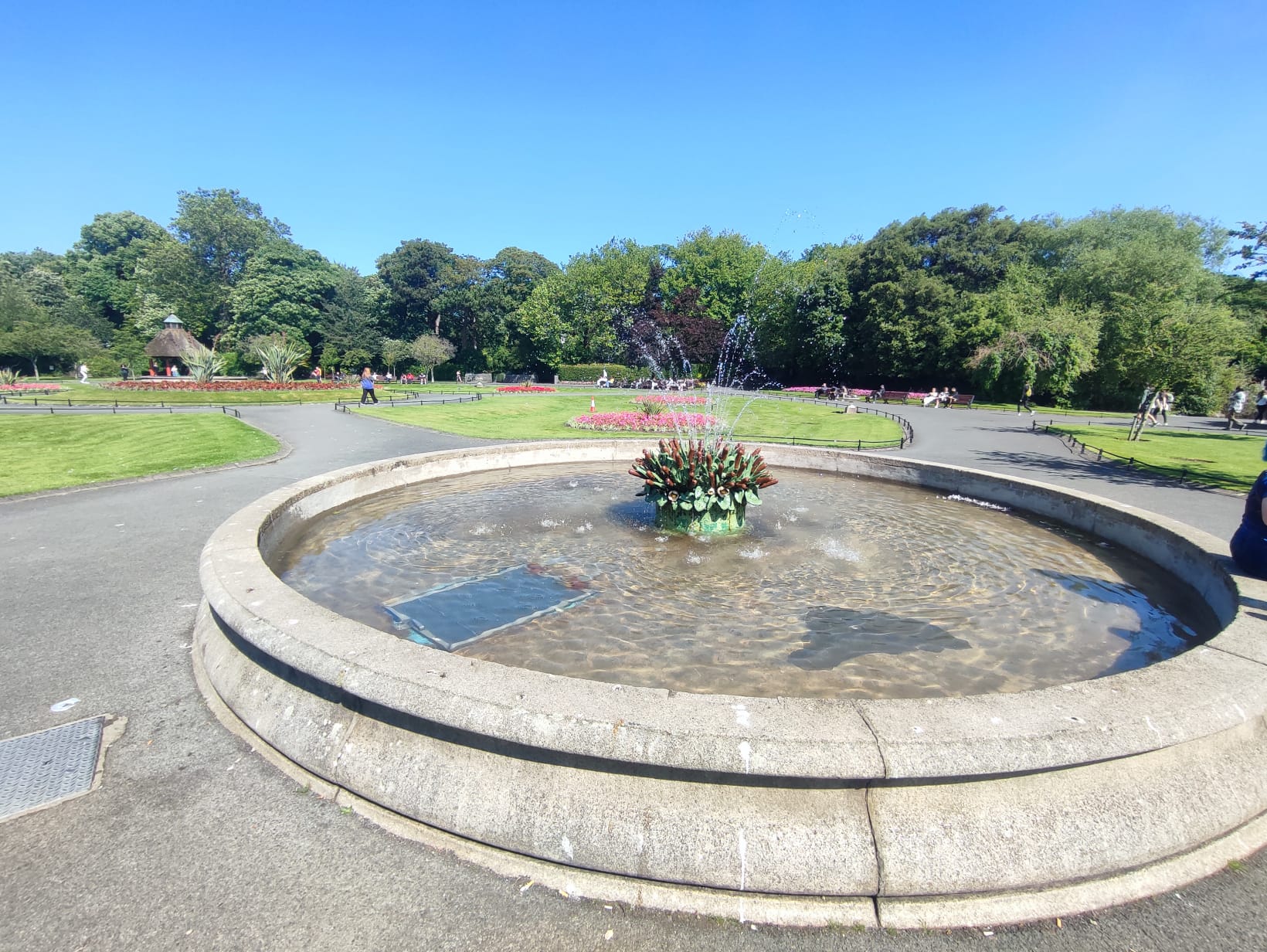
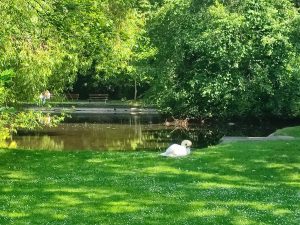 Interestingly, the park also played a role in one of Ireland’s most significant historical events—the Easter Rising of 1916. During the rebellion, a group of Irish Volunteers occupied the park as part of their effort to take control of the city. They dug trenches and exchanged fire with British forces, even though the park offered little real cover. There are still bullet marks visible on the nearby Fusiliers’ Arch today (the main entrance to the park), serving as a quiet reminder of that turbulent time. The arch itself is a memorial dedicated to the soldiers that fought and died in the second Boer war. One of the highlights for us was the large lake, home to graceful swans, cheerful ducks, and a variety of other birds. There was also a couple of beautiful swans that sometimes wonder around the park, especially near the lake. Along the pathways we saw some squirrels running around and climbing trees. A few of them even came close enough to watch curiously, as if they were used to the company of humans.
Interestingly, the park also played a role in one of Ireland’s most significant historical events—the Easter Rising of 1916. During the rebellion, a group of Irish Volunteers occupied the park as part of their effort to take control of the city. They dug trenches and exchanged fire with British forces, even though the park offered little real cover. There are still bullet marks visible on the nearby Fusiliers’ Arch today (the main entrance to the park), serving as a quiet reminder of that turbulent time. The arch itself is a memorial dedicated to the soldiers that fought and died in the second Boer war. One of the highlights for us was the large lake, home to graceful swans, cheerful ducks, and a variety of other birds. There was also a couple of beautiful swans that sometimes wonder around the park, especially near the lake. Along the pathways we saw some squirrels running around and climbing trees. A few of them even came close enough to watch curiously, as if they were used to the company of humans.
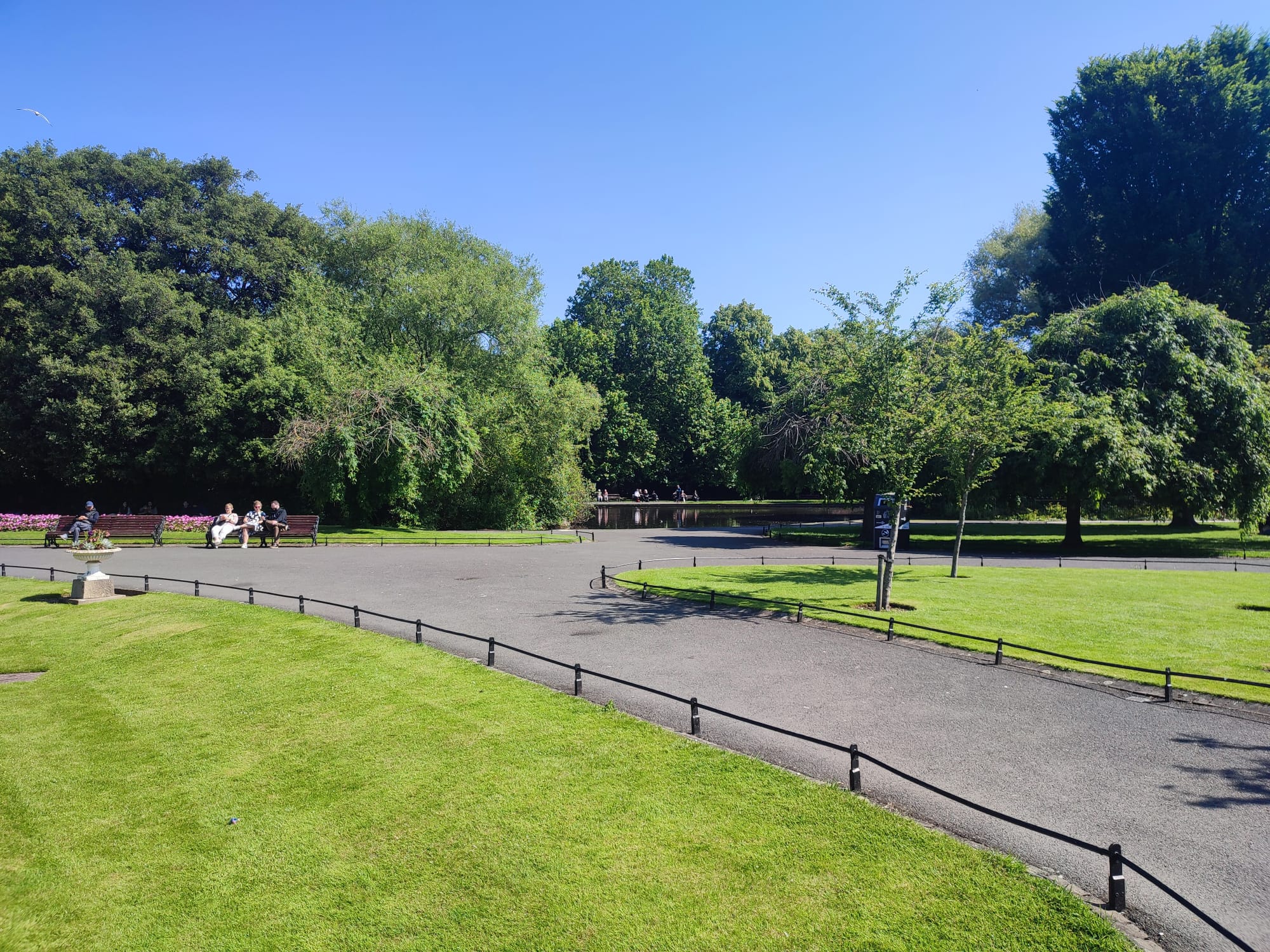
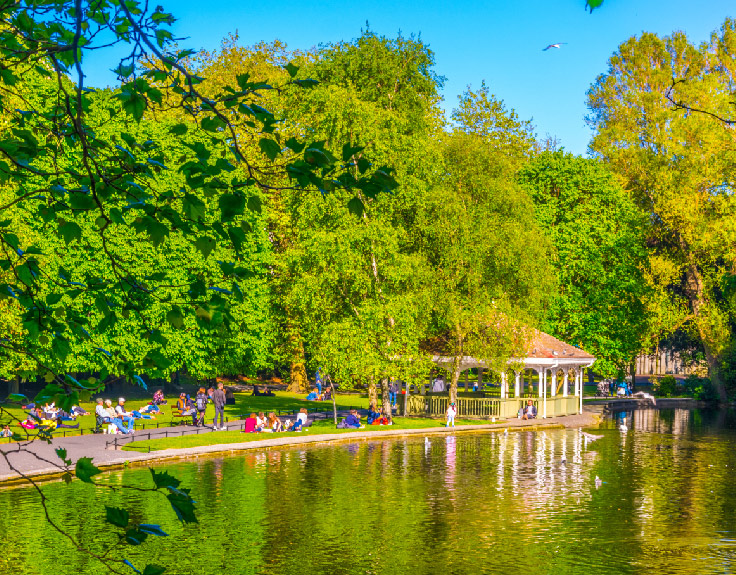
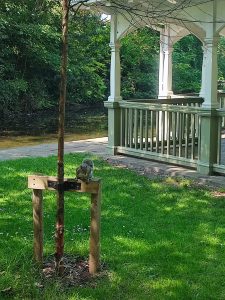 Covering around 22 acres, the park has winding paths ideal for walking or just slowly meandering through. In the center, there’s a lovely formal garden with carefully arranged flowerbeds, trimmed hedges, and a couple of small fountains that add to the sense of elegance. There’s also a Victorian bandstand, and while there weren’t any performances during our visit, I could imagine how lovely it would be to sit and listen to music on a quiet day.
Covering around 22 acres, the park has winding paths ideal for walking or just slowly meandering through. In the center, there’s a lovely formal garden with carefully arranged flowerbeds, trimmed hedges, and a couple of small fountains that add to the sense of elegance. There’s also a Victorian bandstand, and while there weren’t any performances during our visit, I could imagine how lovely it would be to sit and listen to music on a quiet day.
Another thing that stood out was the variety of statues and memorials scattered throughout the park, especially in the corners of the park and the external fence. Each one reflects an important piece of Irish culture and history. We found the James Joyce statue, honoring one of Ireland’s most influential writers. There’s also the Wolfe Tone memorial, dedicated to the Irish revolutionary leader, and the W. B. Yeats memorial garden, in honor of the notorious Irish poet. There is also the Great Famine Memorial, a reminder of one of the darkest times in Irish history.
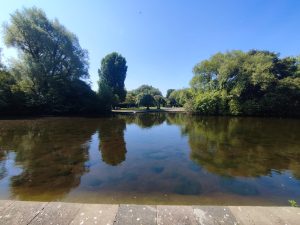 During our visit we saw plenty of benches scattered all around so you can sit down with a book, a coffee, or simply to relax talking with your friends. Sometimes though it can be a little hard to find one that is free: at peak hours the park is visited by lots of people such as locals eating lunch, people walking their dogs, and visitors just enjoying this beautiful place. It’s a place that invites you to pause and breathe, even if only for a few moments. Even families visit the park, thanks to the children’s playground located near the centre area.
During our visit we saw plenty of benches scattered all around so you can sit down with a book, a coffee, or simply to relax talking with your friends. Sometimes though it can be a little hard to find one that is free: at peak hours the park is visited by lots of people such as locals eating lunch, people walking their dogs, and visitors just enjoying this beautiful place. It’s a place that invites you to pause and breathe, even if only for a few moments. Even families visit the park, thanks to the children’s playground located near the centre area.
While St. Stephen’s Green may not be as globally famous as some of Dublin’s other attractions, it ended up being one of the most memorable and enjoyable places we visited. It’s a perfect blend of natural beauty, historical significance, and urban tranquility. If you’re looking for a quiet place to enjoy some of your free time we strongly recommend to check it out.




